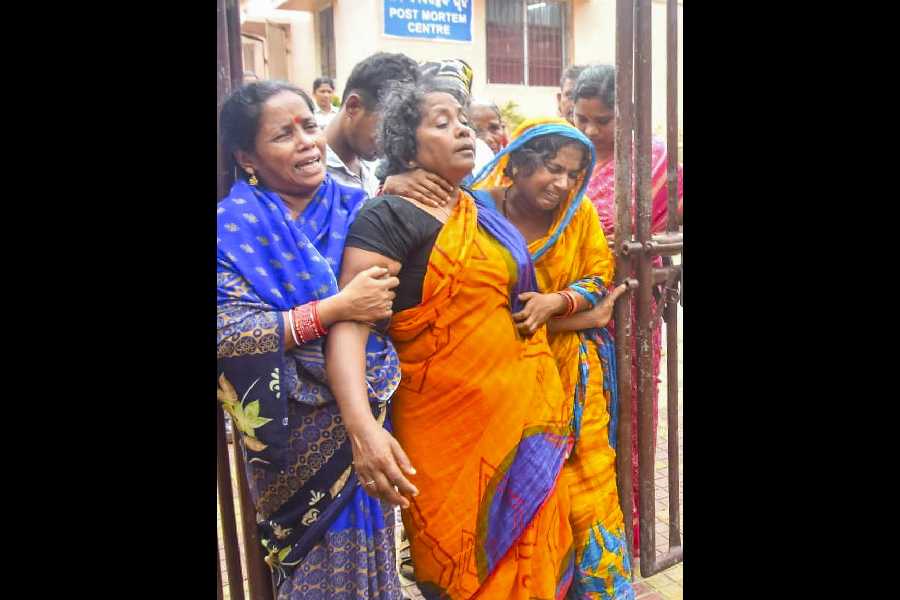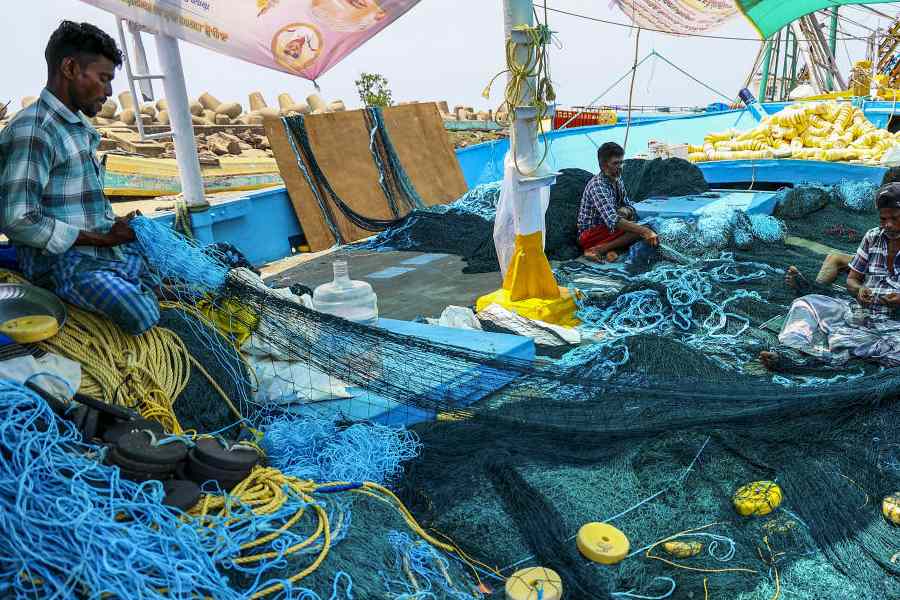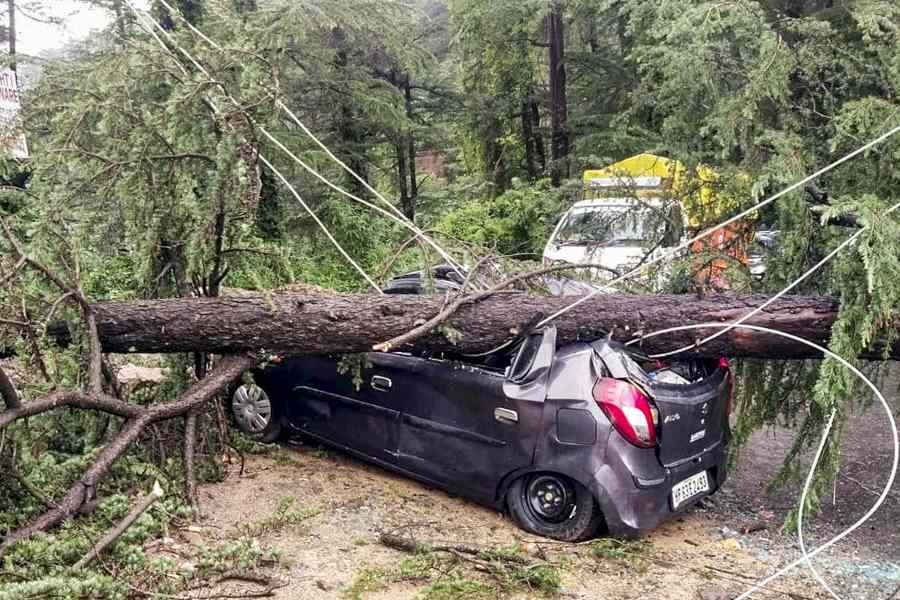 |
| Russian policemen near an ice hole, said to be the point of impact of the meteor, at lake Chebarkul, some 80km west of Chelyabinsk where many people were injured. (Reuters) |
Feb. 17: The Russian city where the biggest meteorite to hit Earth in more than 100 years crashed last week is facing a gold rush, with collectors offering more than £10,000 for a fragment of the rock.
A day after the fireball streaked across the sky and exploded with the force of an atomic bomb, residents in Chelyabinsk were out in force searching for pieces to sell.
Potential buyers posted messages on the Russian Internet, calling on finders to come forward. One Russian buyer offered 500,000 roubles (around Rs 9 lakh) for a single fragment.
At a frozen reservoir outside the nearby town of Chebarkul, where the largest meteorite pieces are thought to have crashed, the local authorities stopped a group of “meteorite hunters” searching around a 26ft wide crater punched in the ice by the impact.
“Off to look for pieces of meteorite! Who knows, maybe I’ll strike gold!” a resident called Sergei wrote online.
“The web is awash with people saying they want to buy this stuff,” said Oleg Karpov, another Chelyabinsk resident. “May be this thing was not that bad after all if a few of us make some money out of it.”
Hours after the blast, in which 1,200 people were injured, mostly by flying glass, dozens went online to claim they have pieces of meteorite to sell.
 |
| Filmmaker Steven Spielberg is a well-known collector of meteorite fragments |
According to the astronomer Phil Plait, author of Death from the Skies, the high value of some of the fragments will attract meteorite hunters from around the world. The fragment that hit the lake was, he estimated, more than 3ft in diameter. Steven Spielberg, the Hollywood director, is among several well-known collectors of meteorite fragments.
A 9-inch piece of the Seymchan meteorite found in Siberia in 1960 sold in New York for $43,750 in October. Plait said: “Having fragments from a known fall — and one with so much amazing footage and drama — means collectors will be all over this.”
However, another collector urged caution. “The value of the fragments depends entirely on what they are made of. They could be valuable or could be worthless,” he said.
Rather optimistically, Russian experts urged people to stay away from the fragments until scientists from Moscow had tested them.
Nasa said that when the meteorite, weighing an estimated 10,000 tonnes, entered the atmosphere, it exploded with about 30 times the force of the nuclear bomb dropped on Hiroshima. The US space agency said it would expect an event of such magnitude to happen “once every 100 years”.
Vladimir Zhirinovsky, a Russian nationalist leader, blamed the Americans for the meteor strike. “It’s not meteors falling. It’s a new weapon being tested by the Americans,” he claimed.
The shock wave from the Chelyabinsk blast shattered an estimated 1m square feet of glass. Some 3,000 buildings in the city were damaged.
Lessons had just begun at schools in Chelyabinsk, almost 1,000 miles east of Moscow, when the meteor exploded. Officials said 258 schoolchildren were among those injured, with 13 still in hospital yesterday.
CCTV footage shows stunned office workers gathering at windows to peer at the vapour trail and bright light before being struck by flying glass and fleeing in panic.
Videos show a blinding brightness, a dazzling object moving with astonishing speed and a long trail. The Russian Academy of Sciences said the meteor entered the Earth’s atmosphere at 33,000 miles per hour and broke up between 18 and 32 miles from the ground.
It was the largest strike since a meteor broke up over Siberia’s Tunguska river in 1908.











